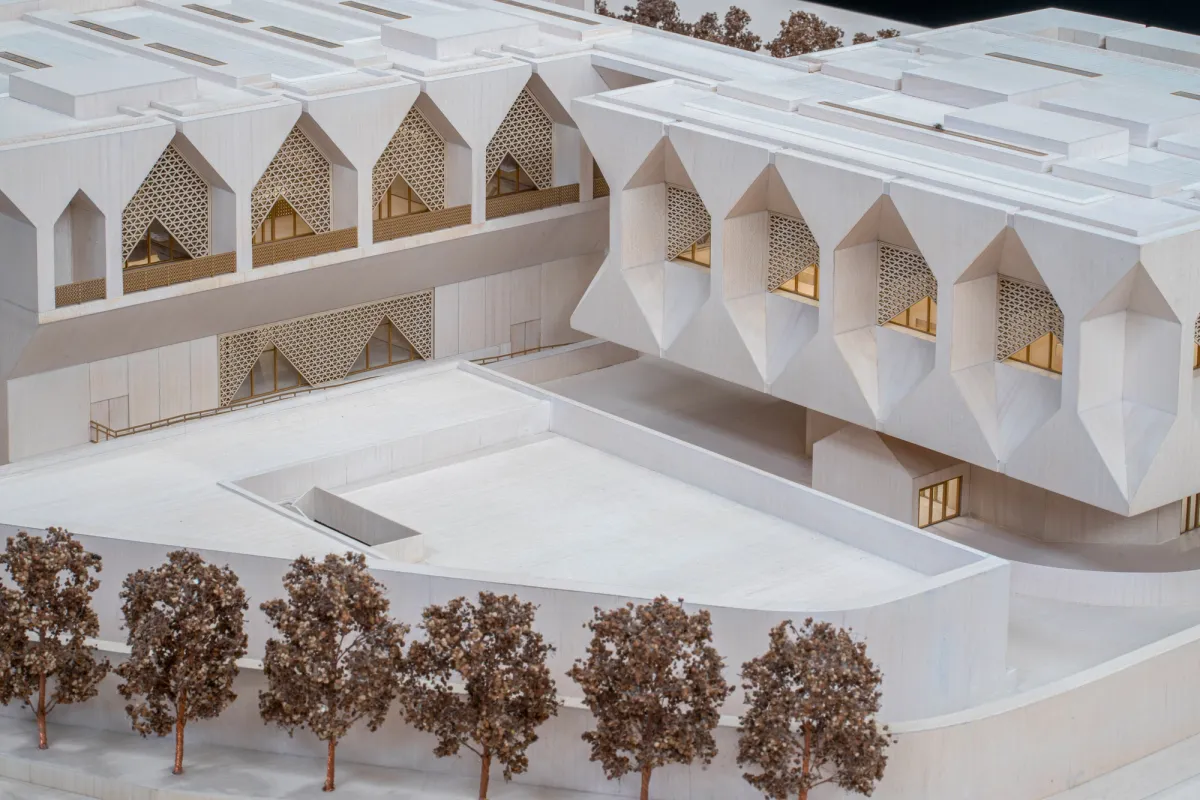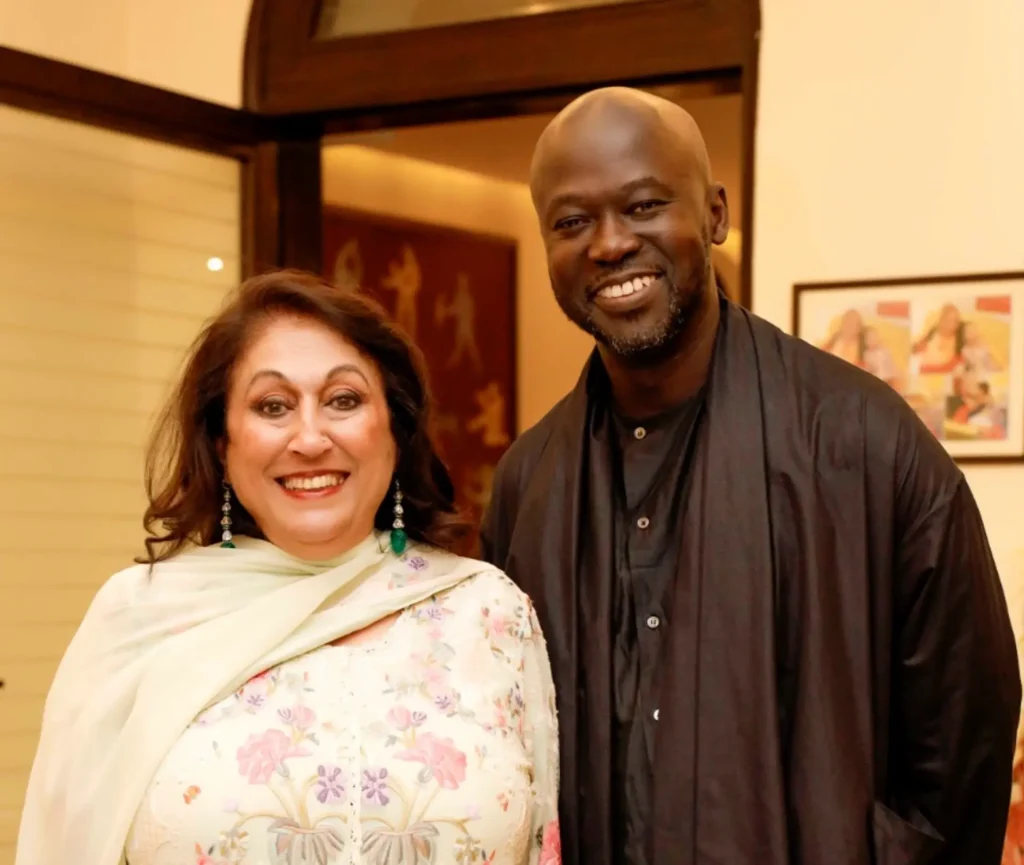Aditya Sisodia
In a time marked by heightened nationalist politics, the forthcoming Kiran Nadar Museum of Art (KNMA) in Delhi stands as a testament to India’s diverse cultures and religions. Scheduled to open in 2026, the museum represents a monumental project that aims to become the nation’s premier modern and contemporary art institution. Its visionary architect, David Adjaye, intends to create a space that celebrates India’s artistic heritage while countering the lack of government support for the arts.
Kiran Nadar, a prominent Indian collector and patron of Modern and contemporary art, has long been a beacon in the country’s art world. In 2010, she opened her first museum in Noida, followed by a second space in Saket, South Delhi. Nadar’s collection has now grown to encompass over 10,000 works, making it one of the largest private collections in India. However, the limited support from the Indian government for modern and contemporary arts motivated Nadar to take action and create a museum that would fill this gap.

Courtesy: Rakesh Anand
At the 18th Venice Architecture Biennale, Nadar unveiled designs for the KNMA alongside architect David Adjaye. The museum, designed by Adjaye Associates in collaboration with local firm S. Ghosh & Associates, will occupy a massive 100,000 square meters near Delhi’s Indira Gandhi International Airport. It will feature 11 galleries for temporary exhibitions and displays of the collection, encompassing diverse art forms ranging from video installations to Indian miniature paintings.
Beyond showcasing art, the KNMA aims to engage new audiences and combat the prevailing apathy towards museums in India. To achieve this, two auditoriums will be constructed to host performances and attract visitors who may not typically be drawn to visual art. The project aims to address the significant potential of India’s arts and culture, which has thus far been hindered by institutions that fail to match its scale.
Nadar’s determination to establish the KNMA is driven by her belief in the power of art to transcend societal boundaries. She emphasises the need for additional individuals and institutions to support the arts in India, highlighting the opening of the Nita Mukesh Ambani Cultural Centre (NMACC) in Mumbai and the Museum of Art and Photography (MAP) in Bangalore as positive developments. Nadar welcomes the prospect of more museums in Delhi, acknowledging that a diverse range of cultural institutions will enrich the city’s artistic landscape.
For Adjaye, the KNMA represents his most significant art project to date. The architecture incorporates influences from India’s rich heritage, drawing inspiration from Hindu shrines, Rajasthan’s Mughal architecture, Delhi’s colonial-era buildings by Edwin Lutyens, and post-independence Modernist and Brutalist structures. Adjaye’s design pays homage to the country’s multiple civilizations, providing an inclusive space that honors India’s cultural diversity.
The timing of the KNMA’s inclusive vision is particularly crucial as India grapples with rising Hindu nationalism and the preservation of its diverse heritage. Historic mosques and Mughal-era buildings have faced destruction, raising concerns about the preservation of cultural treasures. Despite the challenges, Nadar remains committed to inclusivity and rejects the notion of judging which civilization is superior. Her approach fosters respect for all cultures and aims to bridge divides in a polarized political landscape.
While Nadar’s involvement in government events has drawn criticism, she clarifies that her participation does not compromise the KNMA’s artistic integrity or autonomy. The museum remains dedicated to maintaining its curatorial and intellectual independence. However, Nadar acknowledges the difficulties of undertaking a large construction project in India, where opaque planning processes and slow progress can impede development.
Feature image: Kiran Nadar with David Adjay| Courtesy: KNMA





